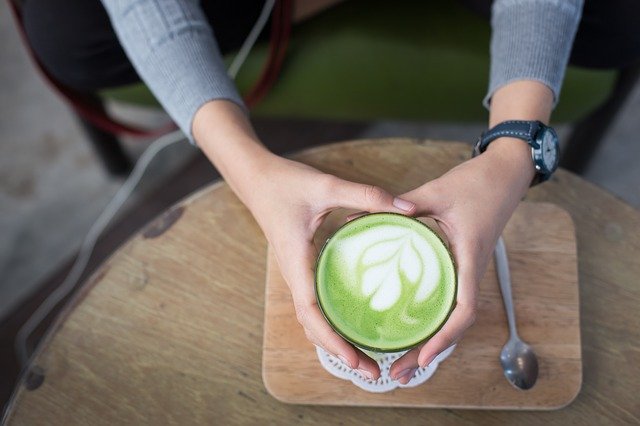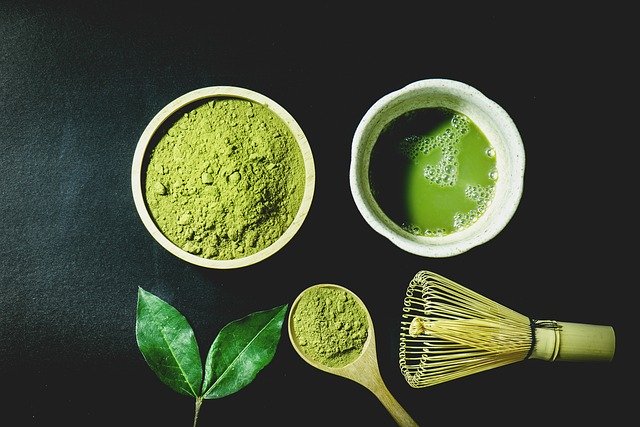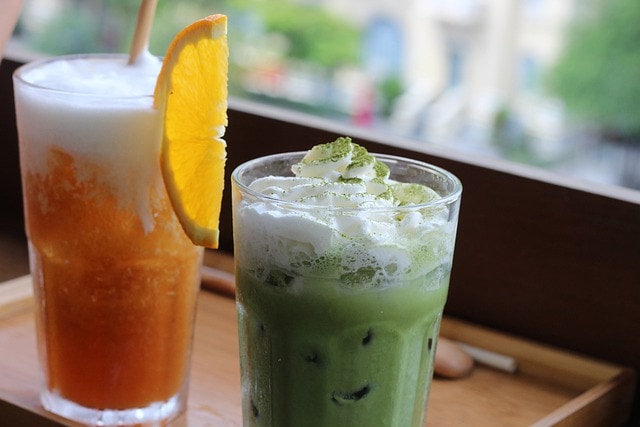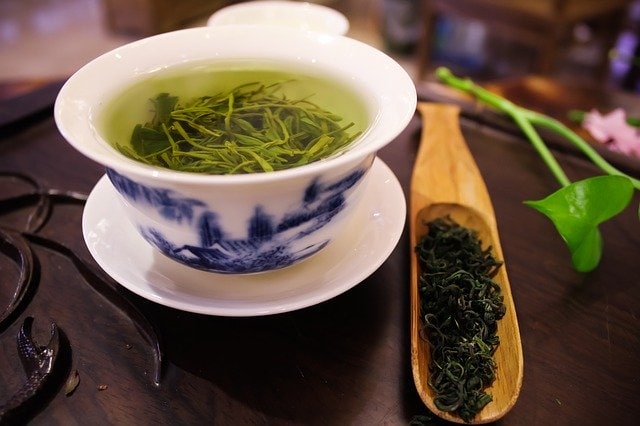Celebs like Jennifer Aniston, Lady Gaga and Cameron Diaz have said that green tea is their hot beverage of choice, and all across Asia, green tea is the preferred option. In China alone, green tea or Lu Cha is available in 500 varieties. So what is all the fuss about? We’re going to talk about the many green tea benefits today.
With its mild floral flavour, immense health benefits and enticing varieties, green tea is increasingly becoming a popular option for tea drinkers in Australia. The list of healthy food and drinks is often influenced by fads but green tea is always high up on the list as a drink that is good for you.

What is green tea?
Almost any teas that you can think of – black, green, white and oolong teas – come from the same plant. What makes them different from each other is the processing method that creates unique flavours.
Green tea is less oxidized and fermented than black, white or oolong teas, allowing the leaf to retain its natural green pigment. This gives it the light-bodied, fragrant flavour that we have come to know and love. The process also preserves the natural polyphenols in the tea which makes green tea good for you.
Green tea is just like wine: the flavours and tastes are affected by the area and climate in which it is grown as well as the various methods of cultivation.
Is matcha the same as green tea?
Matcha is a form of green tea that comes from Japan. While traditional green tea is made by steeping the whole leaf, matcha is made by grinding the tea leaves into a fine powder. This process makes it more potent and it is believed that one cup of matcha equals 10 cups of green tea in terms of antioxidants and nutrient value. However, do note that the caffeine content of one cup of matcha is the same as one cup of coffee.

What are the benefits of green tea?
Green tea has an incredibly high concentration of antioxidants like polyphenols, flavonoids, catechins and epigallocatechin gallate (EGCg).
These antioxidants have been shown to reduce the risk of cancer, heart disease and stroke, and will help your system remove cell-damaging free radicals and metallic ions.
By calming any inflammation in your body, the high flavonoid content reduces your chance of diseases caused by inflammation such as asthma, rheumatoid arthritis, sinusitis, and peptic ulcers.
Start drinking it regularly and you’ll see what makes green tea good for you:
- Improved complexion and skin tone
- Regulated cholesterol levels with balanced ‘good’ and ‘bad’ cholesterol
- Less chance of heart disease
- Lower frequency of dental cavities
- Increased alertness and energy
- Boosted metabolism
- Better immunity
- Improved cardiovascular health
- Pain management for rheumatoid arthritis
But green tea also offers immense psychological benefits such as focus, relaxation, creativity and improved work performance. It has been shown to improve the alpha brain waves in individuals, the same brain waves that are dominant in long-term meditators. This has been attributed to the synergistic effects of caffeine and EGCG which increase mental awareness ever so slightly without the jittery effects of black tea or coffee.
Green tea has been said to reduce the risk of cancer. A study performed by the University of Purdue showed that EGCg compounds inhibit the enzymes required by cancer cells to grow. Even today, the effect of green tea on cancer is being studied but the lower rates of cancer in Japan have been ascribed to the high consumption of green tea.
4 ways to drink green tea
While the preparation of any food or beverage is down to personal choice and individual reactions, there are a few best practices when it comes to the timing and making of green tea. Find out how to make the most of those green tea benefits.
1. Adjust the way you make it
If you find that green tea is too bitter to enjoy, you might want to try making it differently. If boiling water is poured over green tea, it allows the tea to become bitter. Instead, steep the tea for 2-3 minutes in water that is approximately 80 degrees Celsius. You can achieve this temperature by heating the water till just before boiling point.
2. Choose the time of day that works for you
Switching from a lifelong habit of tea or coffee in the morning might be difficult, but you might like to try adding it to your routine later in the day. There are no rules for green tea so it depends on personal preferences.
Some green tea enthusiasts start their day with a cup of this floral steaming beverage while others enjoy it best as the day draws to an end. Experts suggest that it is best you enjoy it in between meals to maximize nutrient intake and iron absorption. Do note that green tea contains caffeine so unless you’re drinking a decaffeinated version, avoid sipping it before bedtime.
3. Drink in moderation
The recommended amount of green tea is 3-5 cups per day. To get the green tea benefits you want, this should be enough. If you’re trying to create a green tea habit for the first time, start with one cup a day. Do not drink more than 8 cups a day.
4. Experiment with hot and cold
If you’re not one for hot beverages or are not keen on replacing your tea or coffee ritual with green tea, you might like to try it cold. Steep the leaves or bag in warm water for a few minutes and then remove the tea bags. Pop some ice cubes in, add honey, ginger, lemon slices, or sprigs of mint and enjoy it as a refreshing drink on a hot day.

Can you drink too much?
There are some things you should know about drinking too much of this magical beverage.
- The caffeine content may make you jittery and affect your sleep cycle
- Certain green tea extracts and plants are known to contain aluminium
- If consumed with your meal, it can interfere with iron absorption by reducing iron bioavailability
- When consumed in large quantities, it may affect pregnant or lactating women
- The tannins in green tea are known to stain your teeth
- The tannins may trigger or exaggerate stomach issues
Green tea has 25 mg of caffeine per cup. Coffee and black tea weigh in at about 102 mg per cup. While green tea may be lower in caffeine than other hot beverages, your tolerance level and existing health conditions may impact the green tea benefits.
Green tea in skincare
Green tea is not just good for you as a hot beverage. It is used extensively in skincare around the world and offers many benefits when applied externally.
Here are some of the benefits for your skin
- Helps repair sun damage caused by UV rays
- Rejuvenates skin cells to slow the ageing process
- Reduces inflammation and treats acne
- Depuffs and tightens with caffeine
- Helps to maintain collagen levels
Six ways to introduce green tea to your skincare routine:
1. Make a green tea face mask
Mix green tea powder with water for a simple mask, with honey for extra moisturizing properties. Leave it on for a few minutes and then wash off.
2. Make a face scrub
Mix green tea powder with oatmeal flour or wheat flour for an all-natural scrub. Rub gently into your skin in small circles and wash off thoroughly.
3. Use as an eye mask
After you make green tea, store the tea bags in the fridge and use them as undereye treatments in the morning. The caffeine in the green tea will reduce puffiness and refresh your eyes.
4. Use as bath scrub or exfoliator
Mix green tea leaves with sugar (for a more intense scrub) or rice flour (for a milder scrub), olive or coconut oil and honey, and stir well. Use on damp skin and rub in circles for a soothing pampering experience. Wash off with water and mild body wash and pat dry. Do keep in mind that this might make your shower area or tub slippery.
5. Use for a manicure or pedicure
Green tea offers all the anti-ageing, cleansing, soothing and antiseptic properties that make it perfect for treating your hands and feet. Soak your feet in warm water with a few tea bags steeping in the tub. Scrub rough patches with a green tea scrub, and follow with nourishing foot cream.
6. Use as a toner
Steep one green tea bag in 240 ml of warm water for a few minutes and allow it to cool. Pour into a clean spray bottle and store in the fridge. You can spritz this on to refresh and tighten your skin at any time.
It is recommended to do a patch test when you’re introducing any new skincare ingredient. If you’re not sure about making your green tea skincare, many brands offer pre-made masks and treatments that include green tea.
For those with renal failure, iron deficiencies, liver problems, heart conditions, or other major cardiovascular problems, even a little caffeine can present serious health concerns. Do check with your doctor before planning a green tea habit if you are pregnant, lactating, or taking medication of any kind.

If you’re keen to enjoy the benefits of the ingredients of green tea but do not like the taste, you might like to try powders. Alternatively, you could add certain fruits and vegetables to your diet to introduce the same ingredients. If you would like to talk to a nutritionist about this, Avaana can help you find one.



